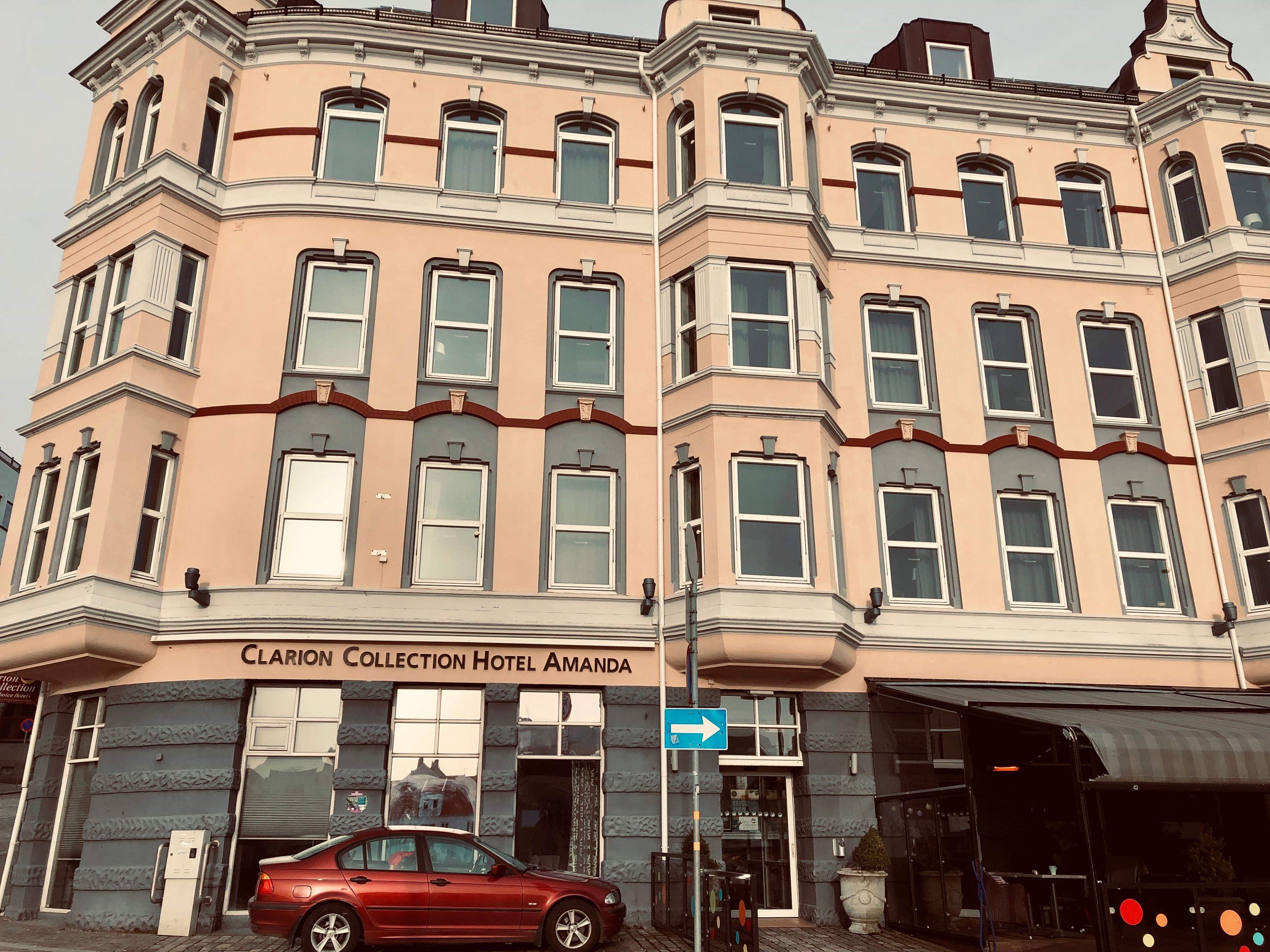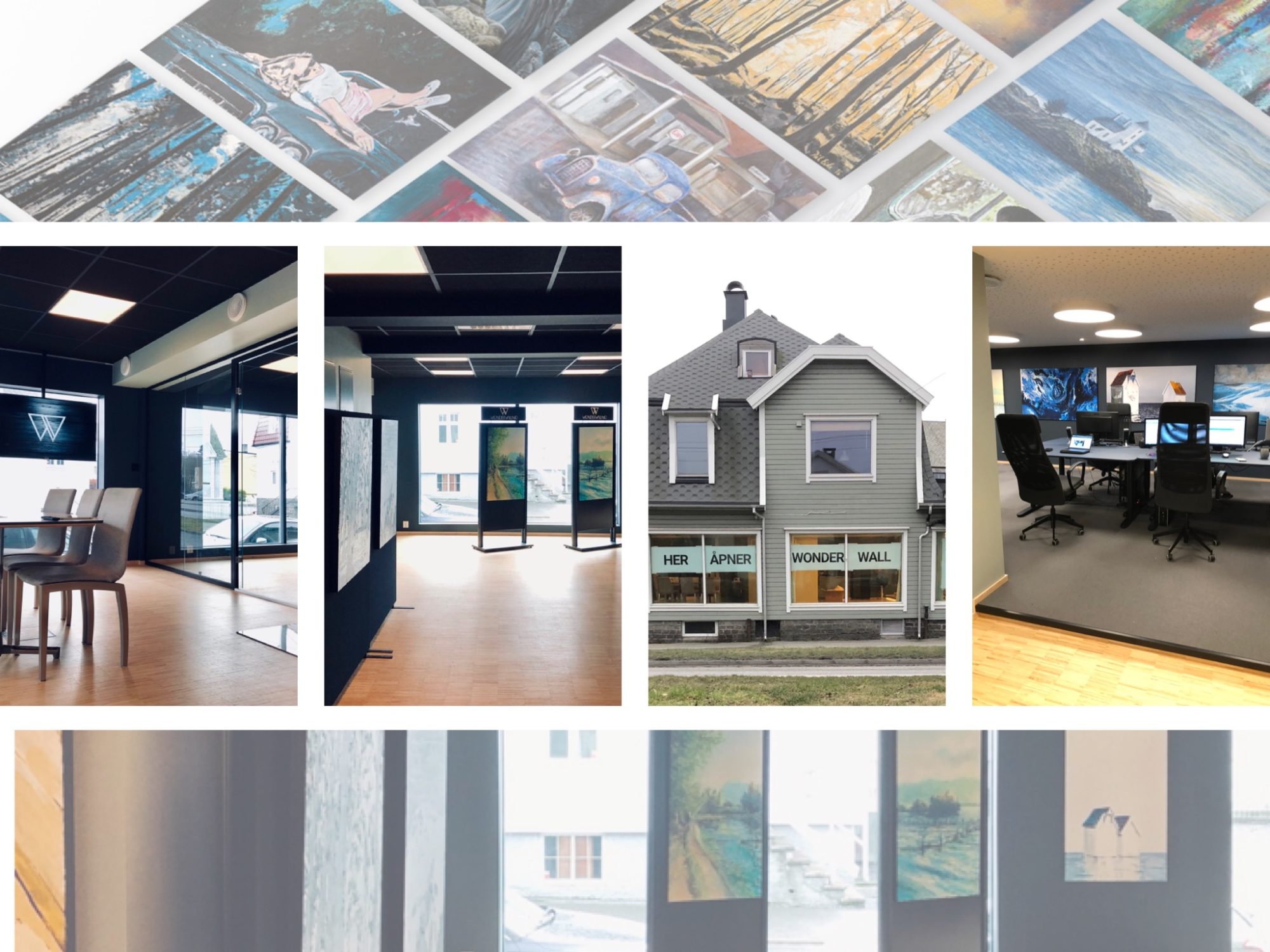His roots are from Nottingham UK, but he lives in Haugesund and his creative artist work can bee seen in several locations in the streets of Haugesund. We have collected some interesting questions for him.
The importance of expression through art, for me, has been intrinsically linked to both a positive life balance and psychological wellbeing for as long as I can recall – I’m certainly most at peace during the creative process as it allows me to bring the rampant thought patterns I have into focus. If I’m not constantly moving forward creatively, a sense of stagnation kicks in which can become overbearing if unchecked. – Benjamin
What makes you want to express art in public locations?
In the mid 90s, I attended an exhibition of William Nicholson’s impressionistic works which had a profound effect on me – the feeling of awe at seeing his paintings was intense and exceedingly inspirational. The idea that I could inspire others through my own work, whether it be exhibitions of my canvas pieces, private commissions or through street art has been a driving factor since. I was fortunate enough to see a Shepard Fairy exhibition in Miami just before the pandemic hit, which reinforced that drive: take inspiration from others so that you can inspire others in turn.
Street art acts as a ‘reset’ of sorts for me. It presents an opportunity to construct images that, thematically, mirror my canvas paintings yet concurrently pushes me to exercise an alternative stylistic approach when committing to a piece. There is a different sense of freedom to creating a piece in a public location as you know that your work is bound to reach a wider audience however that also comes with a higher degree of pressure to ‘get it right’ – the payoff when you do is somewhat euphoric though.
How do you think art effects us in our everyday?
Art is everywhere. It adorns the side of your kid’s cereal box; it is the ‘swoosh’ stamped on the side of your running shoes; it is animated in the video game worlds you traverse. We absorb it every day, often with little consideration. But then there is the art that stops one in their tracks; gives us pause to process the beauty of their creation or message. How people respond to artwork in their day to day lives is unique to the individual but the fact is that it transcends race, sex, religion and language barriers. Yes, it can be used to sell us crap that we don’t need, however it is also an immeasurably valuable mechanism that can be used to communicate and document shared human emotions and experiences.
What is your signature in your work?
The bulk of my work largely centres around iconic pop culture imagery from the music, movies or video games that inspired me in my youth. I incorporate ‘pixilation’ – a combination of calculated squares and erratic circular textures into the pieces, the juxtaposition of which emphasise the reality of life – we wish to control everything yet inevitably cannot do so.
Do you have any thoughts or feelings around street art you would add? Is it a place to express important messages to the younger generations?
I vehemently detest ‘tagging’ for the most part but am a firm believer that quality street art has earned the right to be recognised as a genuine artistic movement that should be celebrated. I am currently working with Haugesund council helping to teach 13-18 year olds the fundamentals of street art in practice. The recent pieces I’ve done around the city are of figures they are unlikely to know, yet the significance of their achievements and what they represent should not be overlooked… John Lennon: peace, Jimmy Hendrix: freedom, Kurt Cobain: nihilism… They may not know who Tony Hawk is but his contribution to skateboarding is unprecedented which is why I selected him for my piece in the local skatepark. Although street art is transient, it at least helps to introduce these inspirational figures to a younger audience
We now live in extraordinarily strange times and I believe both art and music should be used as essential tools to show people that there is still hope left. A simple street art piece can poke fun at a government’s apocryphal narrative or query so called ’truths’ portrayed in false media articles. It can highlight systemic racism, transphobia or environmental issues. It can expose the horrific nature of police brutality, or satirically portray our hopeless addiction to social media. If street art can elicit a response in the younger generation, perhaps it will have done enough for them to question and act upon the issues that are most important.





 Du har ingen produkter i handlekurven.
Du har ingen produkter i handlekurven.